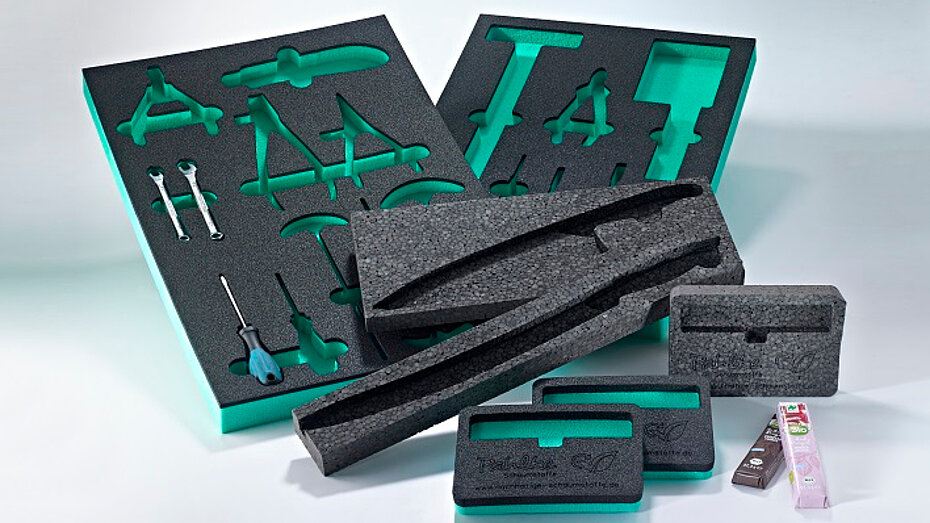
Sustainable PE foam materials
We can now offer sustainable PE foam materials as well as conventional PE foam materials. On account of their closed cellular structure, sustainable and conventional PE foam materials are used in exactly the same way for absorbing sound, insulating, and sealing as well as in packaging applications.
The sustainable alternatives likewise boast properties such as low density, outstanding resistance to ageing and weathering, good sound and heat insulation, plus very good resistance to commercially available acids, alkalis, and other chemicals.
Thanks to these properties, sustainable foam materials are suitable for all applications in which conventional foam materials have been used. Sustainable PE foam materials are primarily used in packaging and to protect goods in transport as well as in industrial and technical applications, where they serve as seals or sound and thermal insulation. In automotive engineering, for example, they are found in door interiors, engines, and headlining.
Like sustainable PUR foam materials, all sustainable PE foam materials have one thing in common—they reduce the foam’s petroleum content, improving its climate footprint.
Please take a look at the following product examples for an initial overview of the possibilities when it comes to sustainable PE foam materials.
Sustainable PE foam based on physically recycled materials
Sustainable PE foam based on organic material
Green PE-Foam:
- Closed-cell, cross-linked PE foam
- Based on 100% renewable raw materials (sugar cane)
- same processing options as conventional PE-Foams
Black PE-Foam:
- Closed-cell, cross-linked PE foam
- responsible manufacturing with 30% of recycled material (PCR-granules)
- same processing options as conventional PE-Foams

Jana Bastian
Sales
+49 (0)2645 9523-18
Send email

Arne Peuling
Sales
+49 (0) 2645 9523-43
Send email

Natalja Weigel
Sales
+49 (0 )2645 9523-28
Send email

Lorenz Cramer
Head of Sales
+49 (0) 2645 9523-14
Send email



